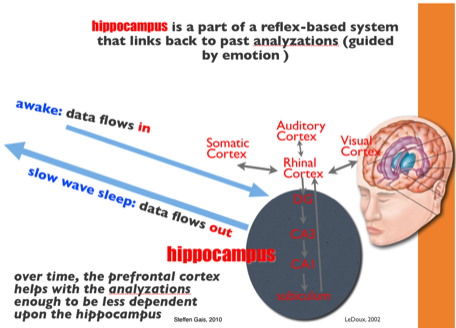The 42 Maxims of neuroELT!
11. “Teaching” should be differentiated and done in high support contexts.
Although it may be the norm, a one-size-fits-all, top-down teaching plan is grossly inadequate for most teaching contexts. Because each learner’s brains are running on vastly differently designed neuro-networks and because each learner will necessarily have a different set of passions, it is impossible to equally raise motivation across the board and therefore equally impossible to provide a high support context to each learner if the teaching is not differentiated for the students. That is, learners should be allowed to follow their passions within the bounds of the learning context and they should be give ample individualized high support to reach individualized goals within those bounds of the learning context.
Q. How is this online course's pedagogic design representative of this maxim?
12. “Regression” is necessary for growth.
Although this may be counterintuitive, regression is actually a fundamental part of of cognitive growth. Human brains grow in cycles of development, just as every other organic on the planet. When each cycle completes, our potential for more complex cognition jumps up for a short period of time — but during the next cycle of development, our potential actually drops down for a significant portion of the cycle of development. Because regression happen in all of us, at completely different times, and it definitely affects our cognitive potential every time it happens, this phenomenon trumps pedagogical assessment in unpredictable ways, rendering much of the typical classroom assessment schemes questionable. How can you tell if a new pedagogy that you are testing on students works well enough if one third of the class is performing lower than their peak potential? More importantly, students (and teachers) should not be reprimanded or punished for showing regression.
Q. Are your students and/or you reprimanded for short term 'falling grades' or falling performance? Why is this so? What should you do about this?
13. “Choices” fuel learner motivation.
The provision of choices to unwieldy children is a time-honored gimmick that works for a significant proportion of the time. As anyone who has tried it knows, simply handing out candies to children is not equal to allowing children to choose their own candies. Children seem to have bigger smiles when given a choice of candies instead of being abruptly handed a candy without choice. In much the same way, learners are much happier when then are allowed to follow their passions in the classroom; if they are given a choice between a range of topics, or a range of levels, the learners are naturally happier and more motivated to do the work. This seems to be true even if there is only one obvious choice and the others choice are false (unreasonable) choices; providing the opportunity to make a choice activates networks in the brain that provide physical satisfaction, rendering this an empowerment activity. Pleasurable neurotransmitters are transmitted when the brain makes a prediction and the outcome matches the prediction.
Q. Consider one of your teaching modules. Can you redesign it so that it includes at least 2-3 ares where students are allowed to make choices regarding their study path within the module? What are your thoughts?
14. “Prediction” is a tremendously powerful tool.
Humans (and indeed most animals) have brains for prediction of the future -not necessarily long term predictions, but simple predictions that keep us alive, such as how an animal might attack us or how a boulder may roll down a hill, etc. Through evolution, just as we now attain pleasure from sexual encounters, we have gained pleasure from making predictions and seeing if the predictions come true. A simple example: if you throw a rock in a meadow, you will have an uncanny desire to watch for where it lands. It is very hard for us to throw a rock and then immediately turn our heads away and never at least glance back at where the rock may have landed. This is because when you throw a rock your brain automatically predicted where it would land just before and while your are throwing it (this is how we learn to control our throws). This desire to see our predictions through of course why gambling, sports, and most any kind of games are so exciting and motivational for us. In the same way, if learners are allowed to make predictions of possible learning outcomes, and they make the predictions public, they will be powerfully motivated to see it though (Willis, 2010). This strongly relates to game theory, and the next maxim.
Q. Have you ever been given a riddle or some difficult question that you actually spent time on, only to find that the answer is not available? How did you react? How can you use this interesting human trait for your own students' learning?
15. “Realtime feedback” can be highly motivational (and educational!)
Because we are largely addicted to the rush that comes from the prediction-outcome dichotomy, feedback can be hugely motivational --if provided in real time. We crave the sustained dopamine rush when we have a string of correct responses. Dopamine levels drops, however, when we are incorrect. We, at lower levels of the brain, accordingly re-map our networks to produce the correct response in order to go back to the dopamine rush because we don't desire the drop in dopamine (Thorsten, 2008). This is of course why video games are so massively popular and why they provide hours of seemingly never-ending motivation, while 10-15 minutes of homework can make learners fall asleep. Most homework does not provide realtime feedback. However, if homework were designed into a video game format that provides realtime feedback, the appeal will be much stronger. Homework has the potential of being addictive if turned into good video game with corrective feedback, if the timing is right, the corrective feedback can be a potent learning experience (Galvan et al., 2006). Players also learn perseverance for their next learning experience with properly times feedback (Gee, 2007). The same goes for classroom experiences. Thankfully, game theory is now being seriously explored in the classroom and is showing highly positive results. This ties in well with Differentiated Instruction, and the provision of choices, which all are highly motivational and are non-coincidentally must closer to real-life experiences than traditional (and often contrived) teaching methods.
Q. Identify a few real-time feedback contexts and a few delayed feed-back contexts. What can you do to implement more realtime feedback for your students both inside of the classroom and outside of the classroom?
16. “Aha moments” cement connections in the brain.
What is an “aha moment”? It is the pleasurable moment when a mystery is solved and/or a prediction-outcome dichotomy is resolved. It is highly pleasurable and therefore motivational. It is an emotional experience and as the first maxim states, emotion drives learning. Neuro-networks are nurtured and sustained by these aha moments, therefore, teaching should be a festival of aha moments. For example, instead of “telling” an answer to a learner, the teacher should allow the learner to solve the mystery on his/her own, albeit with high support. If the ultimate answer is too complex, the teacher should break it down into simpler steps and allow the learner to arrive at each answer on his/her own, with the motivation to go on fueled by the aha moments. Here in Japan, most public school teaching is based solely on rote memorization with minimal aha moments. Language learning in Japanese public schools is akin to memorizing a technical manual. It is therefore boring, unmotivational, and very difficult to achieve high proficiency. On the other hand, if students were allowed to make predictions and create and solve linguistic mysteries on their own (such as through even simple, but real interaction in English), the language learning will be laden with aha moments that create and fortify neuro-networks in the brain efficiently.
Q. When was your last aha moment? Think about it for a moment. Can you piece together certain details it? Why are you able to do that?
17-A. “Plastic” is the brain, and why we learn
Contradictory to common belief, cognitive development can continue until the day a person dies; nothing is set in stone. For example, our hippocampus (the librarian of the brain, at the root of our 'memories') is is now know to produce new neurons (neurogenesis) quite regularly. Neuroplasticity may be counterintuitive, but it explains how and why our some memories can be fleeting while we can concurrently be learning new languages and motor skills. As an extreme example, people who have had hemispherectomies (lost half of their brain) have learned to live normal lives — speaking, playing games, working and even being artistic (Immordino-Yang, 2007). The human brain is therefore remarkably plastic and no one should consider that they will be trapped in their current levels of cognition for the rest of their lives. In fact, the only reason we learn anything is because the brain is plastic. How does this work? A simplistic explanation: We crave dopamine, a pleasure chemical that is produced when we feel that we have come to a good solution regarding anything the brain might be working on. We feel good when we think we are correct. When we feel we have made a mistake, the dopamine levels drop down. Because we want to sustain the dopamine, we re-wire our networks in an attempt to produce better results in the hopes that that will avoid the dopamine drop (Thorsten et al., 2008; van Duijvenvoorde et al., 2008) -- this is 'learning'. Teachers should pay special attention to this maxim, for the sake of their students and for their own professional development.
Q. What does neuroplasticity have to do with learning?
17-B. “Lose” what you don't use
The above maxim tells us the brain is plastic -- it can learn new things in new ways. But the opposite extreme is also very true -- we lose information at an alarming rate. In fact, we lose much more than we keep. What we keep is not ever truly permanent either. So we must continue to rekindle our networks. That can be done consciously, or with the help of sleep and our default modes. Although this may be counterintuitive, sleep and meditation (going into default mode) allows the hippocampus precious time to rekindle our lingering networks. So, unlike notebooks and computers, we must work at keeping our data alive.
Q. A computer does not lose a file simply because it was not is use for a long time. We do -- very often. What can you teach your students to help them combat this phenomenon?
18. “Alignment” delivers us from chaos.
The common state for the human brain is often chaotic — that is, without alignment, the brain is free to explore external and internal data. That is fine unless we are in a learning context and actually want to learn. When in a learning context, teacher-student alignment as well as peer-to-peer alignment delivers us from chaos and makes the learning that much more efficient. There are four basic stages of alignment toward any given goal: (1) chaotic alignment[non-alignment] with the goal, (2) functional alignment with the goal, (3) optimal alignment with the goal, and (4) unity with the goal. The fourth stage is what some might call ‘flow’, or 'in the zone'. Stage 4 alignment is not necessarily the best stage because at this stage, consciousness of surroundings and timekeeping is often lost while in this stage. Stage 4 alignment may be useful for a short period of time, and is highly motivational, but for most pragmatic daily purposes, stage 3 alignment is literally optimal.
Q. Why is level 3 optimal? Why would you not want to be at level 4 all of the time? Would it be possible to have all of your students at level 3 (or 4) all of the time? What does this mean to you as a teacher?
19. “Happy students” are preferable students.
Although this is hardly a revelation for many teachers and students alike, we still find that some teachers (and parents) in Japan prefer unpleasant and downright dismal militant teaching contexts; play is reserved for after the test is passed. Playful breaks are often not allowed during study sessions for the risk of destroying diligent focus on studies. Contrarily, current studies show that happiness takes students further — they tend to achieve higher academic performance and more importantly, the motivation to study lasts longer. For better or for worse, unless you are are clinically depressed, humans have a built in positive bias that brushes off negative experiences as best as it can. This is good because it allows humans to cope well enough in dire conditions, however, it is because we have such positive biases that cope with stressful situations that allows for militant pedagogic practices to remain possible (and popular) in Japan. The upshot is that smiles are contagious, so a simple smile on a teacher’s face can go a long way towards fostering happy student life and positively charged learning contexts. These effects are reciprocal; happy students make happy teachers, too.
Q. How happy are your students? How would you know? Try discussing this maxim with your students as a part of 'learner training' exercise and perhaps a 'metacognition' exercise.
20. “Sleep” is necessary for any long term learning.
As discussed above, skills, knowledge, and memory are context dependent and require the usage of lingering neuro-networks. Lingering neuro-networks gain efficiency and speed with usage but wither when not in use. Cognitive biases are created because of this phenomenon. We can rekindle our lingering networks by conscious usage ‘memories’ in the waking hours, and by unconscious usage of ‘memories’ during naps and regular sleep. The more we sleep, the more chances we give lingering networks to be rekindled. Conversely, when we limit our sleep, we deprive ourselves the chances of rekindling our networks. ‘Absent-mindedness’ and ‘bad memory’ due to lack of sleep is not only well documented, but easily observable in daily life. Lack of sleep hampers all bodily functions, and can be lethal if prolonged. This maxim may therefore me the most important maxim of all. Although sleep is not directly controllable from the classroom context, teachers can affect students’ sleep habits via discussions and perhaps control of homework assignments.
Q. Do your student get enough sleep? Have you discussed it with them? If they don't get enough, what can you do to promote more sleep?
21. "Sleep on it" is wonderful advice.
Sleep enhances insight; sleep sleep provides answers (Stickgold, 2010). When we are awake, the hippocampus, which is like the librarian of the brain, takes in information and 'catalogs' the network usage as best as it can. While we are sleeping, napping, resting, or meditating, the hippocampus turns the flow around and rekindles lingering networks. By doing this, the hippocampus strengthens the lingering networks ("memories") that would not have been strengthened otherwise. This is why sleep, rest, and even meditation is so important to cognition and a meaningful and fruitful life -- it allows the brain to turn on older networks, recombine information, and come up with unique ideas. All of these wonderful things happen within us automatically by just taking time to get well rested.
Q. Have you ever tried sleeping on a question? (I often do! It is quite reliable. Careful --don't stay up all night thinking about it! I find that if I relax and expect an answer to come, I can sleep on it peacefully, and have a nice answer waiting for me in the morning.)
Although it may be the norm, a one-size-fits-all, top-down teaching plan is grossly inadequate for most teaching contexts. Because each learner’s brains are running on vastly differently designed neuro-networks and because each learner will necessarily have a different set of passions, it is impossible to equally raise motivation across the board and therefore equally impossible to provide a high support context to each learner if the teaching is not differentiated for the students. That is, learners should be allowed to follow their passions within the bounds of the learning context and they should be give ample individualized high support to reach individualized goals within those bounds of the learning context.
Q. How is this online course's pedagogic design representative of this maxim?
12. “Regression” is necessary for growth.
Although this may be counterintuitive, regression is actually a fundamental part of of cognitive growth. Human brains grow in cycles of development, just as every other organic on the planet. When each cycle completes, our potential for more complex cognition jumps up for a short period of time — but during the next cycle of development, our potential actually drops down for a significant portion of the cycle of development. Because regression happen in all of us, at completely different times, and it definitely affects our cognitive potential every time it happens, this phenomenon trumps pedagogical assessment in unpredictable ways, rendering much of the typical classroom assessment schemes questionable. How can you tell if a new pedagogy that you are testing on students works well enough if one third of the class is performing lower than their peak potential? More importantly, students (and teachers) should not be reprimanded or punished for showing regression.
Q. Are your students and/or you reprimanded for short term 'falling grades' or falling performance? Why is this so? What should you do about this?
13. “Choices” fuel learner motivation.
The provision of choices to unwieldy children is a time-honored gimmick that works for a significant proportion of the time. As anyone who has tried it knows, simply handing out candies to children is not equal to allowing children to choose their own candies. Children seem to have bigger smiles when given a choice of candies instead of being abruptly handed a candy without choice. In much the same way, learners are much happier when then are allowed to follow their passions in the classroom; if they are given a choice between a range of topics, or a range of levels, the learners are naturally happier and more motivated to do the work. This seems to be true even if there is only one obvious choice and the others choice are false (unreasonable) choices; providing the opportunity to make a choice activates networks in the brain that provide physical satisfaction, rendering this an empowerment activity. Pleasurable neurotransmitters are transmitted when the brain makes a prediction and the outcome matches the prediction.
Q. Consider one of your teaching modules. Can you redesign it so that it includes at least 2-3 ares where students are allowed to make choices regarding their study path within the module? What are your thoughts?
14. “Prediction” is a tremendously powerful tool.
Humans (and indeed most animals) have brains for prediction of the future -not necessarily long term predictions, but simple predictions that keep us alive, such as how an animal might attack us or how a boulder may roll down a hill, etc. Through evolution, just as we now attain pleasure from sexual encounters, we have gained pleasure from making predictions and seeing if the predictions come true. A simple example: if you throw a rock in a meadow, you will have an uncanny desire to watch for where it lands. It is very hard for us to throw a rock and then immediately turn our heads away and never at least glance back at where the rock may have landed. This is because when you throw a rock your brain automatically predicted where it would land just before and while your are throwing it (this is how we learn to control our throws). This desire to see our predictions through of course why gambling, sports, and most any kind of games are so exciting and motivational for us. In the same way, if learners are allowed to make predictions of possible learning outcomes, and they make the predictions public, they will be powerfully motivated to see it though (Willis, 2010). This strongly relates to game theory, and the next maxim.
Q. Have you ever been given a riddle or some difficult question that you actually spent time on, only to find that the answer is not available? How did you react? How can you use this interesting human trait for your own students' learning?
15. “Realtime feedback” can be highly motivational (and educational!)
Because we are largely addicted to the rush that comes from the prediction-outcome dichotomy, feedback can be hugely motivational --if provided in real time. We crave the sustained dopamine rush when we have a string of correct responses. Dopamine levels drops, however, when we are incorrect. We, at lower levels of the brain, accordingly re-map our networks to produce the correct response in order to go back to the dopamine rush because we don't desire the drop in dopamine (Thorsten, 2008). This is of course why video games are so massively popular and why they provide hours of seemingly never-ending motivation, while 10-15 minutes of homework can make learners fall asleep. Most homework does not provide realtime feedback. However, if homework were designed into a video game format that provides realtime feedback, the appeal will be much stronger. Homework has the potential of being addictive if turned into good video game with corrective feedback, if the timing is right, the corrective feedback can be a potent learning experience (Galvan et al., 2006). Players also learn perseverance for their next learning experience with properly times feedback (Gee, 2007). The same goes for classroom experiences. Thankfully, game theory is now being seriously explored in the classroom and is showing highly positive results. This ties in well with Differentiated Instruction, and the provision of choices, which all are highly motivational and are non-coincidentally must closer to real-life experiences than traditional (and often contrived) teaching methods.
Q. Identify a few real-time feedback contexts and a few delayed feed-back contexts. What can you do to implement more realtime feedback for your students both inside of the classroom and outside of the classroom?
16. “Aha moments” cement connections in the brain.
What is an “aha moment”? It is the pleasurable moment when a mystery is solved and/or a prediction-outcome dichotomy is resolved. It is highly pleasurable and therefore motivational. It is an emotional experience and as the first maxim states, emotion drives learning. Neuro-networks are nurtured and sustained by these aha moments, therefore, teaching should be a festival of aha moments. For example, instead of “telling” an answer to a learner, the teacher should allow the learner to solve the mystery on his/her own, albeit with high support. If the ultimate answer is too complex, the teacher should break it down into simpler steps and allow the learner to arrive at each answer on his/her own, with the motivation to go on fueled by the aha moments. Here in Japan, most public school teaching is based solely on rote memorization with minimal aha moments. Language learning in Japanese public schools is akin to memorizing a technical manual. It is therefore boring, unmotivational, and very difficult to achieve high proficiency. On the other hand, if students were allowed to make predictions and create and solve linguistic mysteries on their own (such as through even simple, but real interaction in English), the language learning will be laden with aha moments that create and fortify neuro-networks in the brain efficiently.
Q. When was your last aha moment? Think about it for a moment. Can you piece together certain details it? Why are you able to do that?
17-A. “Plastic” is the brain, and why we learn
Contradictory to common belief, cognitive development can continue until the day a person dies; nothing is set in stone. For example, our hippocampus (the librarian of the brain, at the root of our 'memories') is is now know to produce new neurons (neurogenesis) quite regularly. Neuroplasticity may be counterintuitive, but it explains how and why our some memories can be fleeting while we can concurrently be learning new languages and motor skills. As an extreme example, people who have had hemispherectomies (lost half of their brain) have learned to live normal lives — speaking, playing games, working and even being artistic (Immordino-Yang, 2007). The human brain is therefore remarkably plastic and no one should consider that they will be trapped in their current levels of cognition for the rest of their lives. In fact, the only reason we learn anything is because the brain is plastic. How does this work? A simplistic explanation: We crave dopamine, a pleasure chemical that is produced when we feel that we have come to a good solution regarding anything the brain might be working on. We feel good when we think we are correct. When we feel we have made a mistake, the dopamine levels drop down. Because we want to sustain the dopamine, we re-wire our networks in an attempt to produce better results in the hopes that that will avoid the dopamine drop (Thorsten et al., 2008; van Duijvenvoorde et al., 2008) -- this is 'learning'. Teachers should pay special attention to this maxim, for the sake of their students and for their own professional development.
Q. What does neuroplasticity have to do with learning?
17-B. “Lose” what you don't use
The above maxim tells us the brain is plastic -- it can learn new things in new ways. But the opposite extreme is also very true -- we lose information at an alarming rate. In fact, we lose much more than we keep. What we keep is not ever truly permanent either. So we must continue to rekindle our networks. That can be done consciously, or with the help of sleep and our default modes. Although this may be counterintuitive, sleep and meditation (going into default mode) allows the hippocampus precious time to rekindle our lingering networks. So, unlike notebooks and computers, we must work at keeping our data alive.
Q. A computer does not lose a file simply because it was not is use for a long time. We do -- very often. What can you teach your students to help them combat this phenomenon?
18. “Alignment” delivers us from chaos.
The common state for the human brain is often chaotic — that is, without alignment, the brain is free to explore external and internal data. That is fine unless we are in a learning context and actually want to learn. When in a learning context, teacher-student alignment as well as peer-to-peer alignment delivers us from chaos and makes the learning that much more efficient. There are four basic stages of alignment toward any given goal: (1) chaotic alignment[non-alignment] with the goal, (2) functional alignment with the goal, (3) optimal alignment with the goal, and (4) unity with the goal. The fourth stage is what some might call ‘flow’, or 'in the zone'. Stage 4 alignment is not necessarily the best stage because at this stage, consciousness of surroundings and timekeeping is often lost while in this stage. Stage 4 alignment may be useful for a short period of time, and is highly motivational, but for most pragmatic daily purposes, stage 3 alignment is literally optimal.
Q. Why is level 3 optimal? Why would you not want to be at level 4 all of the time? Would it be possible to have all of your students at level 3 (or 4) all of the time? What does this mean to you as a teacher?
19. “Happy students” are preferable students.
Although this is hardly a revelation for many teachers and students alike, we still find that some teachers (and parents) in Japan prefer unpleasant and downright dismal militant teaching contexts; play is reserved for after the test is passed. Playful breaks are often not allowed during study sessions for the risk of destroying diligent focus on studies. Contrarily, current studies show that happiness takes students further — they tend to achieve higher academic performance and more importantly, the motivation to study lasts longer. For better or for worse, unless you are are clinically depressed, humans have a built in positive bias that brushes off negative experiences as best as it can. This is good because it allows humans to cope well enough in dire conditions, however, it is because we have such positive biases that cope with stressful situations that allows for militant pedagogic practices to remain possible (and popular) in Japan. The upshot is that smiles are contagious, so a simple smile on a teacher’s face can go a long way towards fostering happy student life and positively charged learning contexts. These effects are reciprocal; happy students make happy teachers, too.
Q. How happy are your students? How would you know? Try discussing this maxim with your students as a part of 'learner training' exercise and perhaps a 'metacognition' exercise.
20. “Sleep” is necessary for any long term learning.
As discussed above, skills, knowledge, and memory are context dependent and require the usage of lingering neuro-networks. Lingering neuro-networks gain efficiency and speed with usage but wither when not in use. Cognitive biases are created because of this phenomenon. We can rekindle our lingering networks by conscious usage ‘memories’ in the waking hours, and by unconscious usage of ‘memories’ during naps and regular sleep. The more we sleep, the more chances we give lingering networks to be rekindled. Conversely, when we limit our sleep, we deprive ourselves the chances of rekindling our networks. ‘Absent-mindedness’ and ‘bad memory’ due to lack of sleep is not only well documented, but easily observable in daily life. Lack of sleep hampers all bodily functions, and can be lethal if prolonged. This maxim may therefore me the most important maxim of all. Although sleep is not directly controllable from the classroom context, teachers can affect students’ sleep habits via discussions and perhaps control of homework assignments.
Q. Do your student get enough sleep? Have you discussed it with them? If they don't get enough, what can you do to promote more sleep?
21. "Sleep on it" is wonderful advice.
Sleep enhances insight; sleep sleep provides answers (Stickgold, 2010). When we are awake, the hippocampus, which is like the librarian of the brain, takes in information and 'catalogs' the network usage as best as it can. While we are sleeping, napping, resting, or meditating, the hippocampus turns the flow around and rekindles lingering networks. By doing this, the hippocampus strengthens the lingering networks ("memories") that would not have been strengthened otherwise. This is why sleep, rest, and even meditation is so important to cognition and a meaningful and fruitful life -- it allows the brain to turn on older networks, recombine information, and come up with unique ideas. All of these wonderful things happen within us automatically by just taking time to get well rested.
Q. Have you ever tried sleeping on a question? (I often do! It is quite reliable. Careful --don't stay up all night thinking about it! I find that if I relax and expect an answer to come, I can sleep on it peacefully, and have a nice answer waiting for me in the morning.)
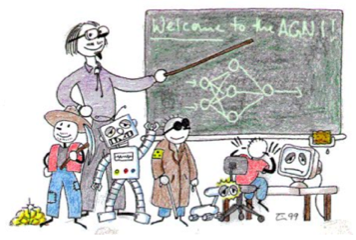
“Teaching” should be differentiated and done in high support contexts.
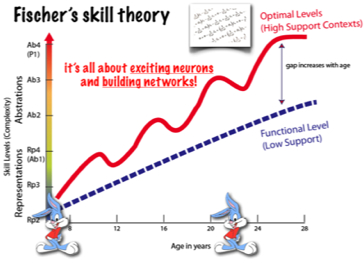
“Regression” is necessary for growth.

“Choices” fuel learner motivation.

“Prediction” is a tremendously powerful tool.

“Prediction” is a tremendously powerful tool.

“Realtime feedback” can be highly motivational (and educational!)
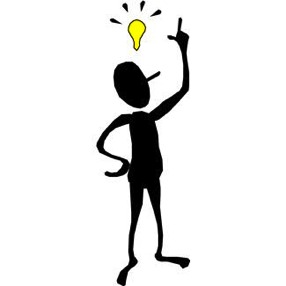

“Alignment” delivers us from chaos.
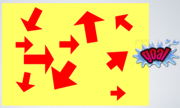
Chaotic alignment toward the goal.
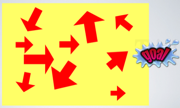
Functional alignment toward the goal.
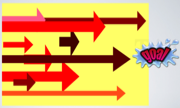
Optimal alignment toward the goal.
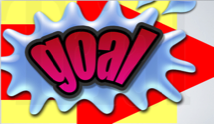
Unity with goal.
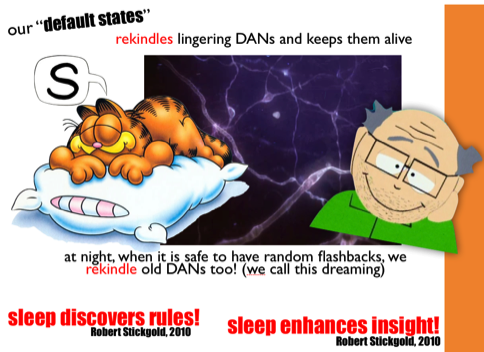
"Sleep on it" is wonderful advice.
